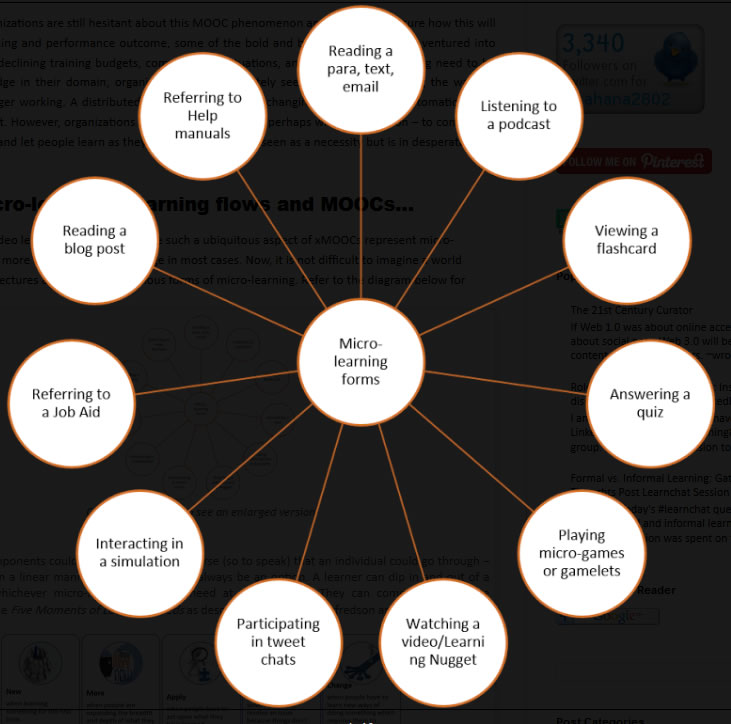A series re: The Learning Flow — by Jane Hart
(1) Beyond the Course: The Learning Flow – a new framework for the social learning era
(2) The Learning Flow and the User Experience
(3) Three Types of Learning Flow
(4) The role of the Guide in a Learning Flow
Excerpt:
- S/he needs to be a knowledgeable expert in the relevant domain.
- S/he needs to be a curator – but more than a curator.
- S/he needs to able to pick out key resources and materials from the mass of material shared online. In other words s/he needs to be able to extract the “signal from the noise”.
- S/he needs to be able to “join the dots” between resources – and show how one relates to the other.
- S/he needs to be able to contextualize resources and make them relevant to the participants – drawing out the salient point(s) of the resources s/he shares.
- S/he needs to be able to model good knowledge sharing skills.
- S/he needs to “think small” – and create short manageable micro-learning activities.
- S/he needs to “think social”- and how she can inspire and encourage short social learning experiences.
- S/he needs to “think flexible” – and how she can support autonomy and choice in users’ participation.
From Micro-Learning to Corporate MOOCs — from idreflections.blogspot.com by Sahana Chattopadhyay
Excerpt:
I see MOOC as a dissemination model that offer a unique opportunity to integrate both—micro-learning and learning flows. It is an approach that – if done right – can integrate all aspects of the Pervasive Learning model – Formal, Informal and Social – popularized by Dan Pontefract in the book, Flat Army. I will discuss this in a later post. In this post, I am going to focus my attention on how micro-learning and learning flows can be an integral part of a MOOC and how this may benefit the corporate world.









